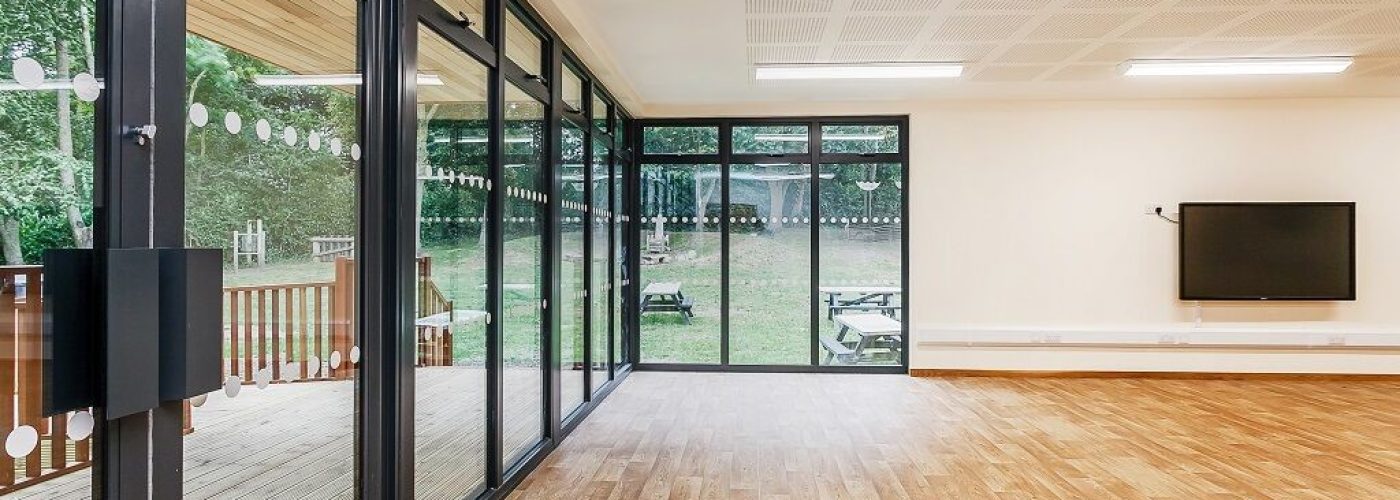Until the 1960s, there was a big focus on how daylight could help prevent the development of myopia in children. Now, there’s a renewed interest in daylighting classrooms to protect the eyesight of young children, with solutions like our modular classrooms proving incredibly popular. With this in mind, we consulted an expert to help us learn more about the link between daylight and a child’s learning and development.
The Benefits of Natural Light: The Expert View
To help us learn more about how natural light helps the learning and development of children, we spoke to Dhruvin Patel, who is the Optometrist & Founder of Ocushield.
“Thank you for speaking to us Dhruvin. Firstly, what are the wider health benefits of natural light?”
The most common benefit of natural light is its positive impact on our health. It regulates our sleep-wake cycle and puts different hormonal functions in place. It also increases serotonin levels, which are responsible for our sense of appetite, memory, energy and sleepiness.
“How does natural light impact learning? For example, how does it help brain function, memory and health?”
In humans, the retina detects light using specialised photoreceptor cells. These can be further expressed by a photopigment cell called melanopsin, which sends messages to an area in the brain called the suprachiasmatic nuclei (SCN). Here, a cascade of events take place that regulate many functions in the body such as metabolism, attention, stress response, endocrine function and more.
Therefore as you wake up, natural light is a great resource for your body to get into action. If you’re someone who struggles to get out of bed, you should open the blinds as soon as you wake up. If this isn’t possible, use a specialised light source that emits a powerful intensity light. About 10,000 lux at 25cm is the industry standard and it will take about 30 minutes for you to feel the full effects.
“What are the differences between an adult brain and a child’s brain in this context?”
Children’s eyes absorb more light and more blue light in general. This is because their pupils generally are larger than an adult’s, which means more light enters. A child’s eyes are not fully developed until their teenage years, therefore children are more at risk of having their circadian rhythms (sleep-wake cycle) disturbed.
“From a brain function, memory and health point of view, what makes up the ideal learning environment for children?”
We know putting down devices is not always possible; especially with schools now giving iPads to children to do homework on. But, you can use software that limits blue light such as night mode on iPads, or you can use blue light filters such as Ocushield.
Interestingly, high levels of oxygen also keep us more awake. This means breathing exercises in the morning can kick start a child’s body for the day. When in classrooms, learning with sufficient fresh air or even outside (not always practical) would work best.
How Else Can Parents Prepare Their Children for the School Day?
Increasing the amount of natural light your child receives is clearly very important for their learning and development. With classroom environments expected to look different to accommodate the ongoing Coronavirus pandemic, more open spaces will be one avenue explored. But, there are a number of other ways you can also help prepare them for the school day, including…
Altering their sleeping environment
Your young child’s sleeping environment shouldn’t be a place where they play, so consider removing all toys from the room.
Once you’ve established the room as a place for sleep, you should make every possible effort to help make them feel safe and secure. This could include the addition of a nightlight and maybe the presence of some additional heat.
Establishing a routine
A bedtime routine helps your child understand what is expected of them when it’s time to go to bed. The activities you choose are entirely up to you, but you should do the same things at the same time each night.
Stop technology use before bed
Televisions, mobile phones and tablets are all useful for keeping children entertained, but they can prevent your child going to sleep because they suppress the hormones that cause sleepiness. So, try replacing this device use with either calming music or a bedtime story.
Encourage self-settling
Hearing your child cry is awful, but teaching them to self-settle rather than being reliant on you is a crucial step. Always encourage your child quietly back to bed and ensure they receive the same response from you each time.
Establish a healthy diet
Your child’s food and drink intake can impact their learning and sleep. For example, if they drink caffeinated drinks such as coffee or fizzy pop, they’ll find it harder to sleep.
Similarly, eating a large meal before bed can prevent sleep. If your child has an early bedtime, then it’s likely they’ll need to eat before the rest of the family does.
Encourage your child to exercise
If your child is inactive throughout the day, they may struggle to sleep at night. So, encourage them to take part in after-school activities like clubs and sports teams. If they’re not particularly sporty, then just walking with them will help.
To conclude, the amount of sleep your child receives each night is very important for their learning and development but, as our expert has shown us, the amount of light they receive in a school setting is also crucial. Thankfully, our modular classrooms are designed to filter in as much light as possible, so children receive the full learning benefits of working in natural light rather than potentially damaging blue light. Contact us today to learn more.





